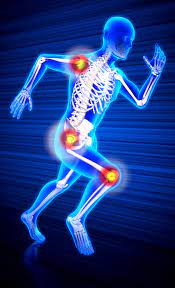
Pain Relief for Herniated Discs: What You Need to Know
Significant discomfort and disruptions to daily living can result from herniated discs. These spinal problems arise when a spinal disc’s softer, gel-like core pushes through its harder outer layer, frequently pinching surrounding nerves and causing pain, numbness, or weakness. It is essential to comprehend the variety of pain management choices available in order to effectively manage this illness. This is a thorough resource to help you understand the herniated disc treatment options.
Knowledge of Herniated Discs
It’s critical to comprehend what a herniated disc is before using any pain management techniques. The vertebrae that make up the spine are spaced apart by shock-absorbing discs. Every disc contains a hard outer layer called the annulus fibrosus and a soft inner core called the nucleus pulposus. When the nucleus pulposus pulls through a rip in the annulus fibrosus, it can press on spinal nerves and cause a herniation. Depending on where and how severe the herniation is, a herniated disc can cause a variety of symptoms. Localized back pain, sciatica—a pain that radiates down the legs—numbness or tingling, and muscle weakness are typical symptoms.
First Pain Management Techniques
1. Rest and Adjustment of Activities
It’s critical to strike a balance between rest and light exercise during the acute phase after a herniation. It is often advised against extended bed rest because it might weaken and stiffen muscles. Rather, choose to alternate short stretches of relaxation with easy, low-impact activity. Stretching and walking are two exercises that can promote healing and help you stay flexible.
2. The Use of Heat and Cold
Immediate pain relief can be achieved by applying either cold or heat to the affected area. Cold packs, especially in the first 48 hours after injury, can help numb the sore area and reduce inflammation. Following this time, applying heat therapy—using a heated cloth or heating pad—can help to relax tense muscles and enhance local blood flow.
3. Nonprescription Painkillers
Pain and inflammation brought on by a herniated disc can be controlled with the use of nonsteroidal anti-inflammatory medications (NSAIDs), such as ibuprofen or naproxen. While acetaminophen doesn’t treat inflammation, it might be useful in treating pain as well. Prior to beginning any new drug, make sure you understand the dosage guidelines and speak with a healthcare professional.
Exercise and Physical Therapy
1. Personalized Physical Rehabilitation
A physical therapist can create a customized exercise plan to increase flexibility, strengthen the muscles supporting the spine, and release pressure from the herniated disc. Exercises aimed at promoting good body mechanics, posture, and core strength are frequently included in physical therapy. Methods like physical therapy and targeted stretching exercises can also be helpful.
2. Low-Pressure Activities
Low-impact exercises that don’t overly strain the spine, like swimming or utilizing an elliptical machine, can improve cardiovascular health. Without aggravating symptoms, these workouts promote spinal health and general fitness.
Modern Options for Pain Relief
1. Injections of epidural steroids
Epidural steroid injections can provide significant pain relief for more severe cases of herniated discs. Through direct delivery of corticosteroids into the epidural area around the spinal nerves, these injections lessen pain and inflammation. Short-term symptom management and encouraging participation in physical therapy are two areas where this treatment may be especially beneficial.
2. Chiropractic Therapy
Adjustments from a chiropractor can help by correcting problems with spinal alignment. By manipulating the spine using hands-on techniques, chiropractors can improve range of motion and possibly lessen nerve compression. Before beginning chiropractic care, it’s crucial to speak with a healthcare professional, particularly if there is a lot of nerve involvement.
Procedure
Surgical surgery may be required if conservative therapy are unable to relieve neurological symptoms sufficiently or if the symptoms worsen and cause severe weakness or loss of function. To relieve pressure on the nerves, surgical treatments such as discectomy or microdiscectomy entail removing the herniated part of the disc. Finding the best surgical
strategy requires discussing the advantages and disadvantages with a spine specialist.
Long-Term Management and Preventive Measures
A number of crucial procedures are necessary to manage long-term spinal health and prevent future herniations:
Sustaining Appropriate Posture:
Maintaining appropriate posture during lifting, sitting, and standing helps lessen the chance of a disc herniation and ease back pain management.
Frequent Exercise:
Regular low-impact exercise helps preserve flexibility and develop the muscles that support the spine.Sustaining a healthy weight lessens the strain on the spine and lowers the chance of developing disc problems.
Ergonomic Adjustments:
Employing ergonomic techniques at work and at home can reduce back strain and prevent herniations.
In summary
Physical therapy, sophisticated treatments, lifestyle modifications, and initial pain reduction measures are all part of the multimodal approach to managing pain from a herniated disc. Through a comprehensive comprehension of the array of accessible alternatives and close collaboration with medical experts, people can proficiently handle their symptoms and enhance their standard of living. Taking care of a herniated disc with a thorough plan can result in successful outcomes and a healthier spine, regardless of whether conservative treatments or surgical techniques are utilized.